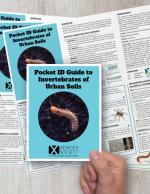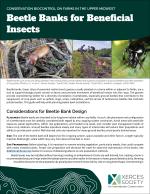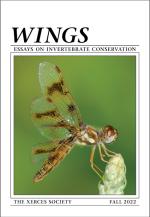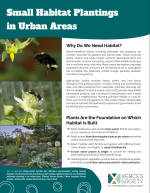As a science-based organization, the Xerces Society produces dozens of publications annually, all of which employ the best available research to guide effective conservation efforts. Our publications range from guidelines for land managers, to brochures offering overviews of key concepts related to invertebrate conservation, from books about supporting pollinators in farmland, to region-specific plant lists. We hope that whatever you are seeking—whether it's guidance on making a home or community garden pollinator-friendly, advice on developing a local pesticide reduction strategy, or detailed information on restoring habitat—you will find it here!
Find Publications
Use the search functions to sort by publication type (books, guidelines, fact sheets, etc.), location, and/or subject (agriculture, gardens, pollinators, pesticides, etc.).
The Xerces Habitat Kit Program offers carefully selected, regionally appropriate, climate-resilient plants directly to partners. Read this postcard and visit the Xerces Society Habitat Kit Program webpage to learn more!
Aproximadamente el 25% de todos los organismos conocidos del planeta son animales que viven en el suelo durante toda o parte de su vida. La mayoría de estos animales son invertebrados que interactúan con microbios, plantas y entre sí, dando forma a la vida de suelos saludables.
About 25% of all known organisms on the planet are animals that live in the soil through all or a portion of their lives. The majority of these animals are invertebrates that interact with microbes, plants, and each other, forming the life of healthy soils.
Beneficial Insects in Small-Scale Farms and Community Gardens
Decision-making on farms can be a balancing act, often with limited time, labor, and resources. Installing native plants to support beneficial insects can provide stability for a small-scale farm or community garden. Similar to the multiple roles friends and neighbors play in our local communities, beneficial insects can offer many services to a farm or garden. Lacewings, predatory and parasitic wasps, flies, beetles, native bees, and other insects play a vital role, day and night, in the production of agricultural crops through pollination, pest control, and building healthy soils.
Conservation Biocontrol on Farms in the Upper Midwest
This fact sheet provides information on planning, locating, and installing beetle banks in the Upper Midwest, including recommended grasses and flowers that can be planted. Beetle banks are linear strips of perennial native bunch grasses that provide overwintering shelter for predatory ground beetles, spiders, and other beneficial invertebrates.
Essays on Invertebrate Conservation
Understanding the natural history of the species we work with is the foundation of our efforts to protect invertebrates and their habitats. We at Xerces are completely enthralled by the amazing behaviors, intriguing relationships, and eye-catching beauty of these animals. This issue of Wings features bees, butterflies and wasps, and dragonflies. We hope you find them as entrancing as we do.
Northern Great Plains Edition
This guide is intended as a portable, accessible guide for recognizing common, and nutritionally important, wildflowers and shrubs found on rangelands of the Northern Great Plains.
Native beneficial insects, including pollinators and predators, are critically important for gardens and natural areas.





